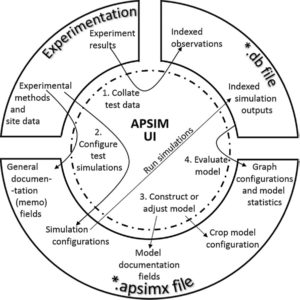Crop model improvement in APSIM: Using wheat as a case study
Crop systems models are used in a wide range of applications and to be fit for these purposes crop models should be:
• Accurate, proven by evaluations over a wide range of situations.
• Documented, so that critics and users can understand the technical detail and processes used in the current version of the model.
• Reliable, able to reproduce results on an ongoing basis. • Adaptable, to and easily updated by a wide range of users and,
• Safe from accidental or unapproved changes by user

As such the process of building and maintaining a crop model is a major undertaking and many crop models fail to continually meet these standards. A paper recently published by Brown et al (2018) details how APSIM Next Gen has been engendered to support an efficient workflow in the development and maintenance of crop models to help meet these standards. The paper describes how the user interface is central to facilitating the development cycle Test simulations are configures via an efficient user interface (UI) which also collates corresponding observations and presents a range of statistics and graphs. Models are configured visually in the UI so changes may be quickly made simulations re-run and consideration of the effect of changes quickly reviewed. As such more simulations and observations can be included and more approaches to model set up and parameterisation tried as part of the model development process facilitating better models and more robust testing.

